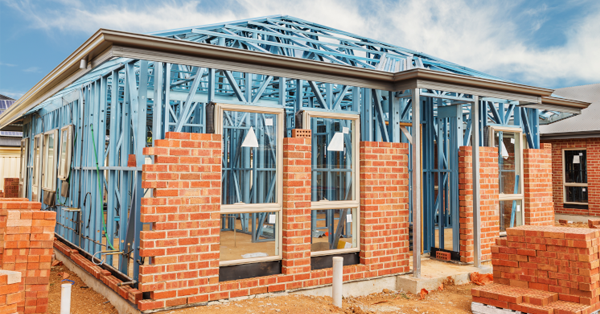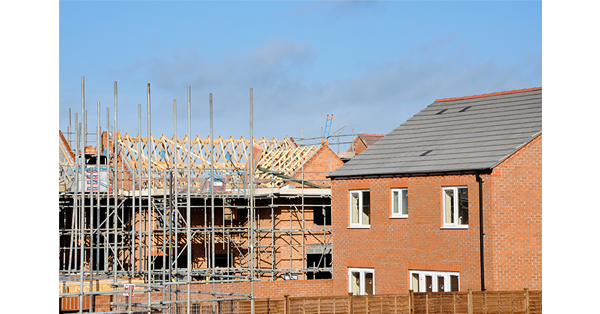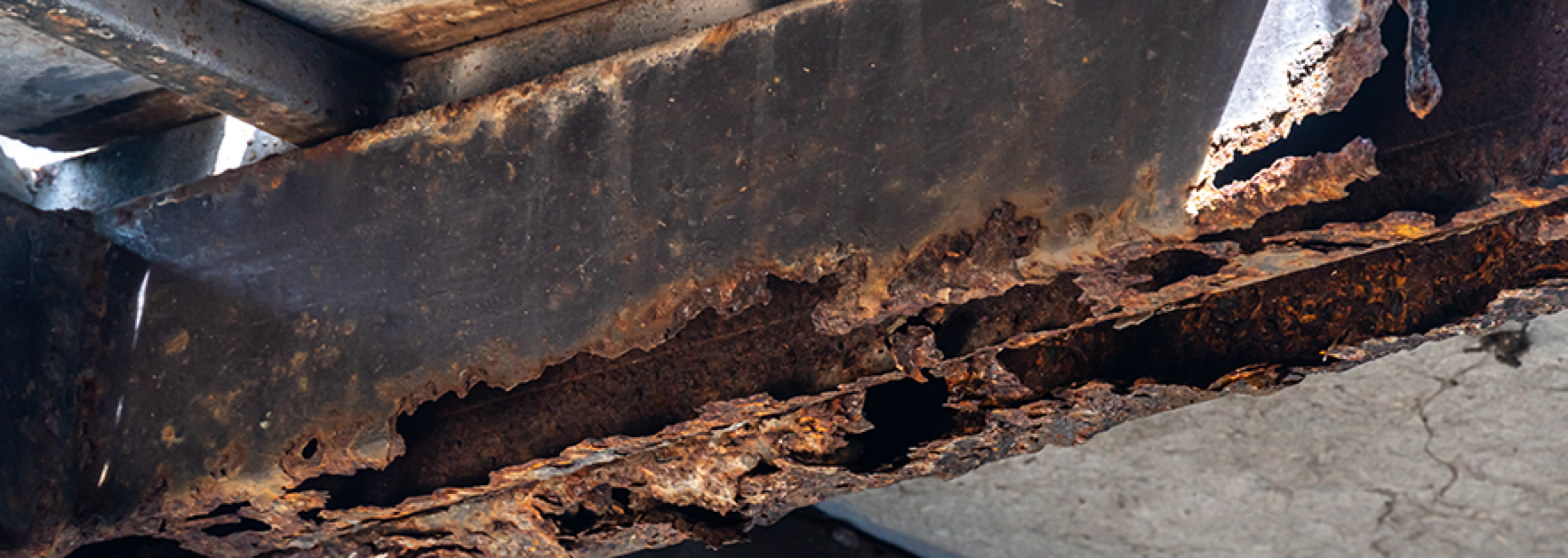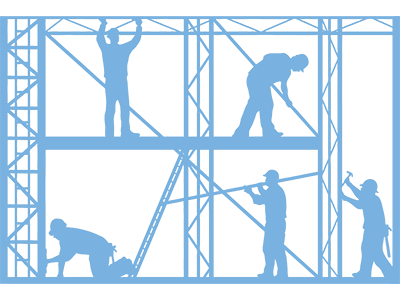Steel Frame House
- A steel frame house is classified as being of non-standard construction (or non-traditional construction) much like concrete houses.
- If you are looking to buy or sell one, you need to be aware that this has implications for your mortgage, buildings insurance and your home buyers survey.
- It's worth noting that steel frame houses might be difficult to spot because of external brickwork or render or other cladding.
- 1
What's the difference between a steel frame and a brick house?
In the UK, brick-built houses are regarded as being of standard or traditional construction and the vast majority of houses are built using brick.
The construction process typically involves the laying of a concrete foundation and building walls on top of this using layers of bricks which have mortar in between them. The floors are mainly constructed from wood as is the internal roof structure.
Building using steel frames is a comparatively more recent phenomenon, first appearing in the 20th century. In more recent times, there has been a growth in factories making steel frames for residential construction not least because of the increase in self-building.
Most steel construction involves mild steel which is extremely strong: as an example if you had a circular bar of steel 25mm/1 inch thick and attached it to your ceiling, you could hang 2.5 African elephants from it(!)
The technique used for building houses is termed light gauge steel construction and involves light gauge steel members, which consist of thin sheets of steel (1 to 3mm) which have been cut and constructed (using techniques such as welding, bolting or riveting) into the shapes required for the foundational panels at a factory, before transporting the panels to the sites where the houses are constructed.
The frames must be thoroughly attached to the concrete foundation and once they are, any number of other materials can be used to fill the structure of a house out, including bricks or other render.


- 2
Steel frame vs brick house - Pros and Cons?
We'll tackle the 'cons' of a steel framed building first because these matters are the reasons for problems with the mortgageability of some steel framed houses (discussed below) and getting building insurance for them. They also illustrate why, if you're a prospective buyer, you should always get a RICS home buyers survey before buying and, if you know that the property is made from steel frames, you should get a Level 3 RICS Survey.
Cons
- The steel components can corrode severely, particularly at the bases of the wall stanchions as well as the galvanised steel windows and the joins to the concrete ground floor slab.
- You often can't easily detect this corrosion and you can't inspect it unless you open up the walls via an intrusive inspection (i.e. not a standard RICS home buyers survey) and if you were looking to buy a steel frame home, the vendor might not agree to this.
- Steel houses suffer from relatively poor insulation and energy efficiency: steel conducts heat 300 to 400 times faster than wood and reduces the insulating properties of wall insulation by 60% because of thermal bridging (heat taking the most conductive path to dissipate: steel is an excellent conductor of heat. Additionally, thermal bridging can cause black stains to form on the cold portion of the walls.
- When you first look at the property, you might be unaware that it is built of steel frames and even less able to spot evidence of defects - unlike say subsidence and rising damp in brick-built houses - this is one of the areas where an experienced RICS surveyor can be worth their weight in gold.
- Steel framed houses are regarded as being of non-standard construction therefore when it is known that a building is made of steel, you need to get a Building Survey rather than a HomeBuyers Report because they suit the former survey's scope rather than the latter's albeit that a Building Survey costs more than a HomeBuyers Report.
- Special tools are required for maintenance; regarding construction, if for example, you were buying a steel frame home kit, setting it up requires special knowledge and tools and it's very difficult to make any adjustments if there are any inaccuracies with the panels.
- Even a Building Survey - which is a purely visual, non-intrusive inspection, might not provide evidence of structural problems as there's no way of knowing if the body of the steel frames if buried beneath layers of bricks/render, has been affected. For this reason, many surveyors might recommend a further intrusive inspection to provide a better insight into how sound the structure is, because they would not wish to give a 'green light' to a building which might suffer problems further down the line. Following this, there is no reason why a vendor has to agree to such an intrusive inspection, although they might wish for a possible sale to eventually go ahead.

Pros
- Steel is very durable; unlike wood framing it doesn't warp or expand. It can withstand Level 9 earthquakes and hurricane wind speeds because it is flexible and can bend without cracking (plasticity).
- Steel copes better with water damage than wood because it doesn't rot – how good its moisture resistance depends on its carbon content. Hot zinc coating and extra powder treatments for enhanced rust resistance will make a structural steel component even more immune to the effects of water.
- Steel is highly resistant to fungus. Woodworms and termites aren't an issue.
- Steel frame panels are grounded directly to earth - they are therefore highly efficient lightning rods for dissipating lightning bolts into the ground.
- Steel isn't combustible which might mean a discount on buildings insurance.
- Components can be quickly ready-made off-site and then transported to wherever they're needed. They can be made in any shape and clad with any type of material and they can be joined together via bolting, welding or riveting. The frames can be rapidly assembled on-site (with the right skills and tools).

- 3
Why is it hard to get a mortgage on a steel-framed house?
These properties are more popular with cash buyers, however, if you know a house is made of steel it's still possible that you might get a mortgage, although you might wish to use a mortgage broker to help you find the right lender.
Even if you're a cash buyer, you should gain as much knowledge as you can about any steel framed homes you're looking considering, to increase your chances of resale and retaining value.
You should never assume that you can get a mortgage on a steel-framed property. This is because lenders, a number of whom 'got burnt' from previously lending to people who bought defective examples, have become very restricted about which types of steel-framed property they will grant mortgages to buy and some will not grant mortgages on them at all.
Always get a survey before bidding for a property at auction!
Steel frames present a particular hazard when they are sold at auction. A prospective buyer - particularly one who hasn't had a proper survey/inspection carried out - might be unaware that a house is made of steel but reliant on a mortgage to complete a successful bid.
Their lender on finding out the fact of the metal build, can 'pull the rug' from under them - in theory jeopardising their deposit as well.
Over time, mortgage lenders have generally gone towards defining steel framed houses as either A), B) or C), where:
- A means a property in question is mortgageable in its original condition; or
- B means it is mortgageable 'following an approved scheme of repair'; or
- C which means the lenders have ruled it defective and unmortgageable.
In theory, if you knew in advance of applying for a mortgage that the house you wanted to buy was made of steel and you could find out its type, then you could help yourself by hiring a mortgage broker to find you a lender who is more likely to grant you a mortgage for the property.
However in practice you'll have secured your mortgage in principle before you've selected your property. You might then select a steel frame house - without knowing this - to put in a bid for and, if this is accepted, your lender's valuation survey should, but may not, reveal the fact of the steel structure
Scenario 1: The lender's valuation discovers that your property is a steel frame
Here, your lender will decide on one of Options A), B) or C) above; if they choose B), you'll only be able to proceed if you (or you and the vendor, or the vendor takes the entire cost on themselves) payout to carry out the required repairs. Obviously for Option C), you'll have to find another property and you'll lose out on any expenses to that point.
Option B is also likely to involve you and/or the vendor having to pay for a surveyor to carry out an intrusive inspection. The challenge here is that a mortgage company might expect the building surveyor to cover their lending - assuming the surveyor passes the building as structurally sound - with their own indemnity: this is likely to make most surveyors very cautious about their findings.
If there is any evidence at all that the building might suffer problems further down the line, surveyors are likely to err on the side of ruling the structure as potentially unsound because 1) their reputations are on the line and 2) they won't want to have pay for any ensuing claims out of their own insurances.
Scenario 2: The lender's valuation doesn't uncover the fact of the steel frame metal build
You may complete (all other things being equal) however as/when/if the fact of the steel frame build comes out, you might find it very difficult to remortgage with another company, particularly if the build type is known to suffer from defects. Your building insurance is likely to become invalid, necessitating a new policy with a much higher premium (or you might be refused coverage) and you're likely to have much greater challenges when you come to sell up.
- 4
What are the different types of steel frame houses?
There are very many types of steel frames from many different manufacturers. Some of the names of the building companies and types include Trusteel MkII, Trusteel 3M, Telford (1920s), BISF, Nissen-Petren, Falkiner-Nutall, Birmingham Corporation, Arrowhead, Keyhouses Unibuilt, Steane and British Housing among others.
You should consult the Building Research Establishment Bookshop if you're trying to find out more about a particular type of steel frame house.
- 5
Why should you always get a Building Survey for a Steel Frame house?
You are always advised to get a RICS home buyers survey, or a RICS Building Survey when you're looking to buy a property.
If you know that the frame is made of metal or this fact becomes apparent, then you should get a RICS Building Survey, as stated above, because of the wider scope that this type of survey has regarding non-standard properties.
Additionally you should look to hire a RICS surveyor with great experience in surveying steel frames because they are more likely to know how to spot the particular defects which can afflict these types of property.
How might you spot a house's steel framework?
If the loft space is accessible, you can spot the steel framework there as it also comprises the roof structure. The remainder of the frame is concealed between the external skin of brickwork or cladding etc. and the internal drylining. It is sometimes possible to see small amounts of the frame through the meter entry points, or other small openings in cupboard backings etc.
How might a professional surveyor spot signs of corrosion in a steel frame house?
A professional RICS surveyor might spot signs of corrosion if there is patterned cracking in the external skin of brickwork as the corroded frame expands and distorts, together with distorted internal door and window openings.
As stated previously, you should prepare yourself for a surveyor advising you to arrange for a further intrusive survey to better calculate the safety of the build. They might not feel confident about pronouncing the house to be structurally sound, particularly given that a Building Survey, although comprehensive, is a purely visual inspection.
The vendor would have to agree to this; obviously, they might do so if they want the possibility of a sale to you to continue, and the matter of who pays for the further survey has to be settled between yourself and the seller too.
Finally, you should be prepared for the surveyor who carries out the intrusive survey to err on the side of caution as well, not least because any lender is likely to take legal action in the future against that surveyor if they pass the building and it subsequently decayed structurally.
Looking to buy a Steel Frame house? Get a Building Survey from an experienced RICS surveyor
Steel frame houses allow for interesting architectural features which are not possible with standard construction, but they can come with unique defects which may be expensive to remedy. Once you know the house is built from steel frames, you should get a Building Survey from one of our expert RICS surveyors who have years of experience in surveying steel frame properties and other buildings made from non-standard materials.
RICS Surveyors | Steel frame building specialists | Fixed Fees | Same week availability* | Access arranged
Andrew started his career in 2000 working within conveyancing solicitor firms and grew hands-on knowledge of a wide variety of conveyancing challenges and solutions. After helping in excess of 50,000 clients in his career, he uses all this experience within his article writing for SAM, mainstream media and his self published book How to Buy a House Without Killing Anyone.
Caragh is an excellent writer and copy editor of books, news articles and editorials. She has written extensively for SAM for a variety of conveyancing, survey, property law and mortgage-related articles.









